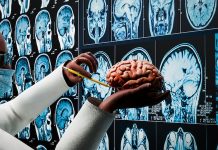
A stroke is a medical emergency that happens when blood flow to the brain is suddenly blocked or when a blood vessel in the brain bursts. This cuts off oxygen to parts of the brain, causing brain cells to die quickly. The effects can be serious or even deadly. But if a stroke is recognized and treated early, the chances of survival and recovery improve dramatically.
That’s why it’s so important to know how to recognize stroke symptoms fast. This article will explain the warning signs in clear, simple language, backed by research, so anyone can learn how to act quickly when it matters most.
Doctors and health organizations around the world recommend using the word FAST to remember the most common signs of stroke. FAST stands for Face, Arms, Speech, and Time.
This simple test was developed based on large studies of stroke patients, including research from the American Stroke Association and the UK’s National Health Service. These studies found that FAST can help detect up to 88% of strokes.
“F” stands for Face. If someone is having a stroke, one side of their face may suddenly droop or feel numb. You can ask the person to smile—if their smile is uneven or lopsided, it could be a stroke. “A” stands for Arms. Stroke can cause weakness or numbness in one arm. Ask the person to raise both arms. If one arm drifts down or can’t be lifted, it’s a warning sign.
“S” is for Speech. Speech may become slurred, confused, or completely lost. Ask the person to repeat a simple sentence. If they can’t say it clearly or correctly, this could mean a stroke. “T” is for Time—because time is critical. If you notice any of these signs, call emergency services immediately. Every second counts.
There are other possible symptoms of stroke that people should be aware of. These include sudden vision problems in one or both eyes, trouble walking, dizziness, loss of balance or coordination, or a severe headache with no clear cause.
However, these symptoms can be harder to spot or may be mistaken for other issues. That’s why the FAST method is the most widely taught and easiest to use in an emergency.
Research shows that early treatment for stroke can make a huge difference. For example, clot-busting drugs can restore blood flow in certain types of stroke if given within 3 to 4.5 hours. In some cases, doctors can also remove a blood clot using a special device, but this needs to be done as soon as possible.
According to the American Heart Association, patients who get emergency treatment quickly are far more likely to survive and recover well.
Sadly, many people delay getting help because they don’t recognize the signs or hope the symptoms will go away. Studies show that only about half of stroke patients arrive at the hospital within the ideal treatment window. That’s why public education is so important. The more people know about stroke symptoms, the more lives can be saved.
In summary, stroke is a serious condition that needs fast action. The FAST test—Face drooping, Arm weakness, Speech difficulty, and Time to call emergency services—is a simple and proven way to spot a stroke quickly.
Recognizing these signs and acting without delay can protect the brain and give someone the best chance at recovery. Knowing what to do could save a loved one’s life—or even your own.
If you care about stroke, please read studies that diets high in flavonoids could help reduce stroke risk, and MIND diet could slow down cognitive decline after stroke.
For more health information, please see recent studies about antioxidants that could help reduce the risk of dementia, and tea and coffee may help lower your risk of stroke, dementia.
Copyright © 2025 Knowridge Science Report. All rights reserved.



